Le Xia
WiserVR: Semantic Communication Enabled Wireless Virtual Reality Delivery
Nov 02, 2022Abstract:Virtual reality (VR) over wireless is expected to be one of the killer applications in next-generation communication networks. Nevertheless, the huge data volume along with stringent requirements on latency and reliability under limited bandwidth resources makes untethered wireless VR delivery increasingly challenging. Such bottlenecks, therefore, motivate this work to seek the potential of using semantic communication, a new paradigm that promises to significantly ease the resource pressure, for efficient VR delivery. To this end, we propose a novel framework, namely WIreless SEmantic deliveRy for VR (WiserVR), for delivering consecutive 360{\deg} video frames to VR users. Specifically, deep learning-based multiple modules are well-devised for the transceiver in WiserVR to realize high-performance feature extraction and semantic recovery. Among them, we dedicatedly develop a concept of semantic location graph and leverage the joint-semantic-channel-coding method with knowledge sharing to not only substantially reduce communication latency, but also to guarantee adequate transmission reliability and resilience under various channel states. Moreover, implementation of WiserVR is presented, followed by corresponding initial simulations for performance evaluation compared with benchmarks. Finally, we discuss several open issues and offer feasible solutions to unlock the full potential of WiserVR.
Wireless Resource Management in Intelligent Semantic Communication Networks
Feb 15, 2022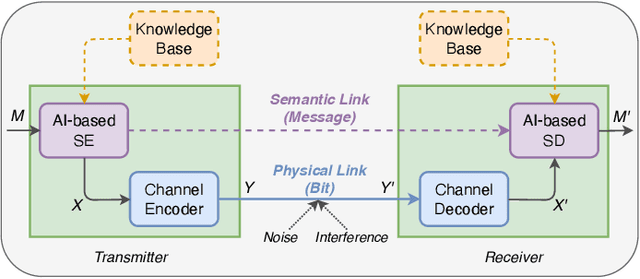
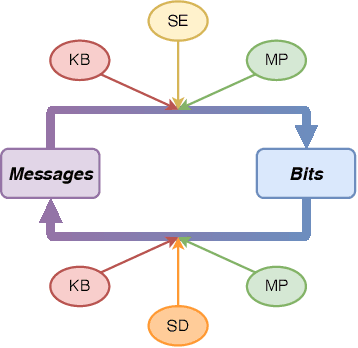
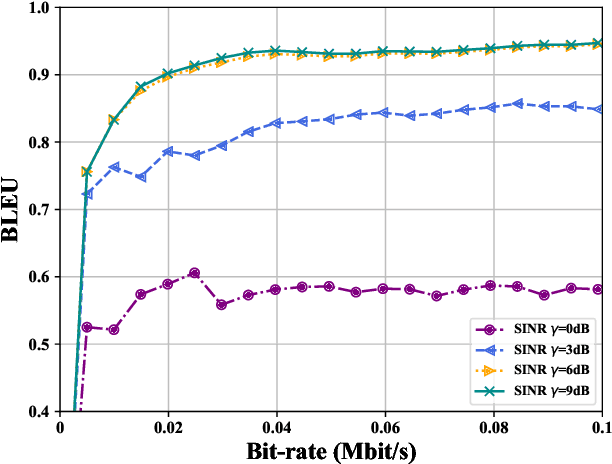
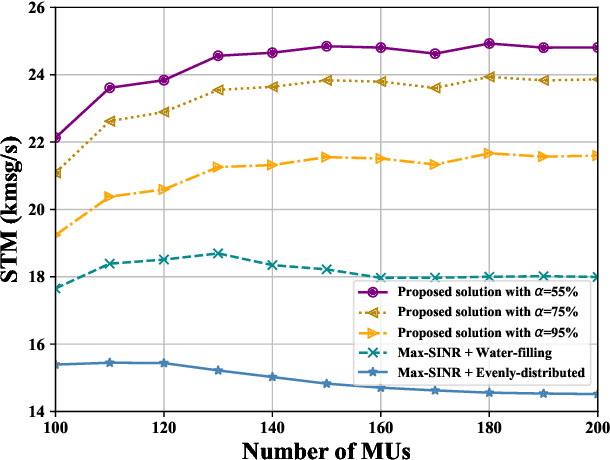
Abstract:The prosperity of artificial intelligence (AI) has laid a promising paradigm of communication system, i.e., intelligent semantic communication (ISC), where semantic contents, instead of traditional bit sequences, are coded by AI models for efficient communication. Due to the unique demand of background knowledge for semantic recovery, wireless resource management faces new challenges in ISC. In this paper, we address the user association (UA) and bandwidth allocation (BA) problems in an ISC-enabled heterogeneous network (ISC-HetNet). We first introduce the auxiliary knowledge base (KB) into the system model, and develop a new performance metric for the ISC-HetNet, named system throughput in message (STM). Joint optimization of UA and BA is then formulated with the aim of STM maximization subject to KB matching and wireless bandwidth constraints. To this end, we propose a two-stage solution, including a stochastic programming method in the first stage to obtain a deterministic objective with semantic confidence, and a heuristic algorithm in the second stage to reach the optimality of UA and BA. Numerical results show great superiority and reliability of our proposed solution on the STM performance when compared with two baseline algorithms.
Smart and Secure CAV Networks Empowered by AI-Enabled Blockchain: Next Frontier for Intelligent Safe-Driving Assessment
Apr 09, 2021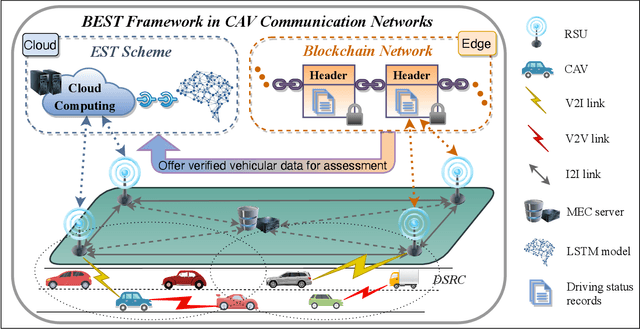
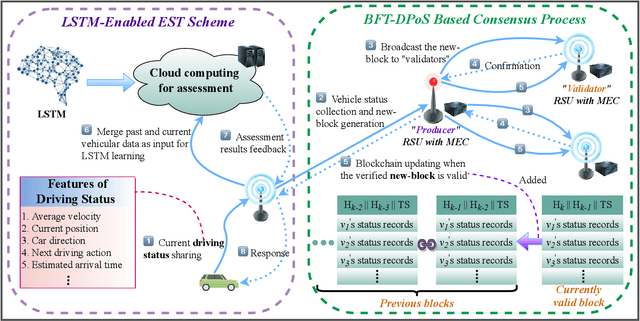
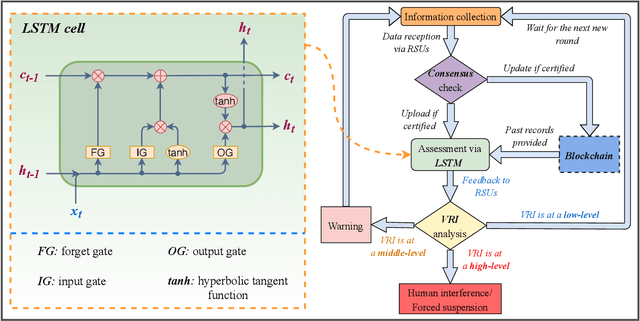
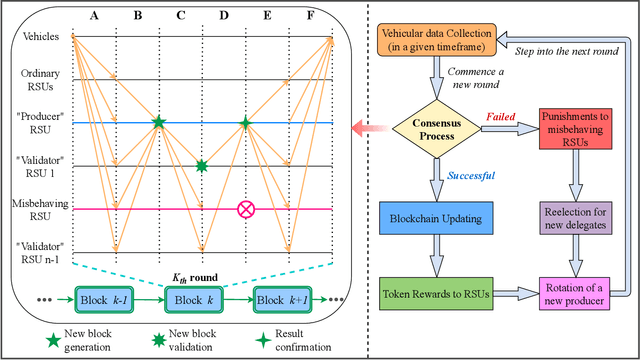
Abstract:Securing a safe-driving circumstance for connected and autonomous vehicles (CAVs) continues to be a widespread concern despite various sophisticated functions delivered by artificial intelligence for in-vehicle devices. Besides, diverse malicious network attacks become ubiquitous along with the worldwide implementation of the Internet of Vehicles, which exposes a range of reliability and privacy threats for managing data in CAV networks. Combined with another fact that CAVs are now limited in handling intensive computation tasks, it thus renders a pressing demand of designing an efficient assessment system to guarantee autonomous driving safety without compromising data security. To this end, we propose in this article a novel framework of Blockchain-enabled intElligent Safe-driving assessmenT (BEST) to offer a smart and reliable approach for conducting safe driving supervision while protecting vehicular information. Specifically, a promising solution of exploiting a long short-term memory algorithm is first introduced in detail for an intElligent Safe-driving assessmenT (EST) scheme. To further facilitate the EST, we demonstrate how a distributed blockchain obtains adequate efficiency, trustworthiness and resilience with an adopted byzantine fault tolerance-based delegated proof-of-stake consensus mechanism. Moreover, several challenges and discussions regarding the future research of this BEST architecture are presented.
 Add to Chrome
Add to Chrome Add to Firefox
Add to Firefox Add to Edge
Add to Edge